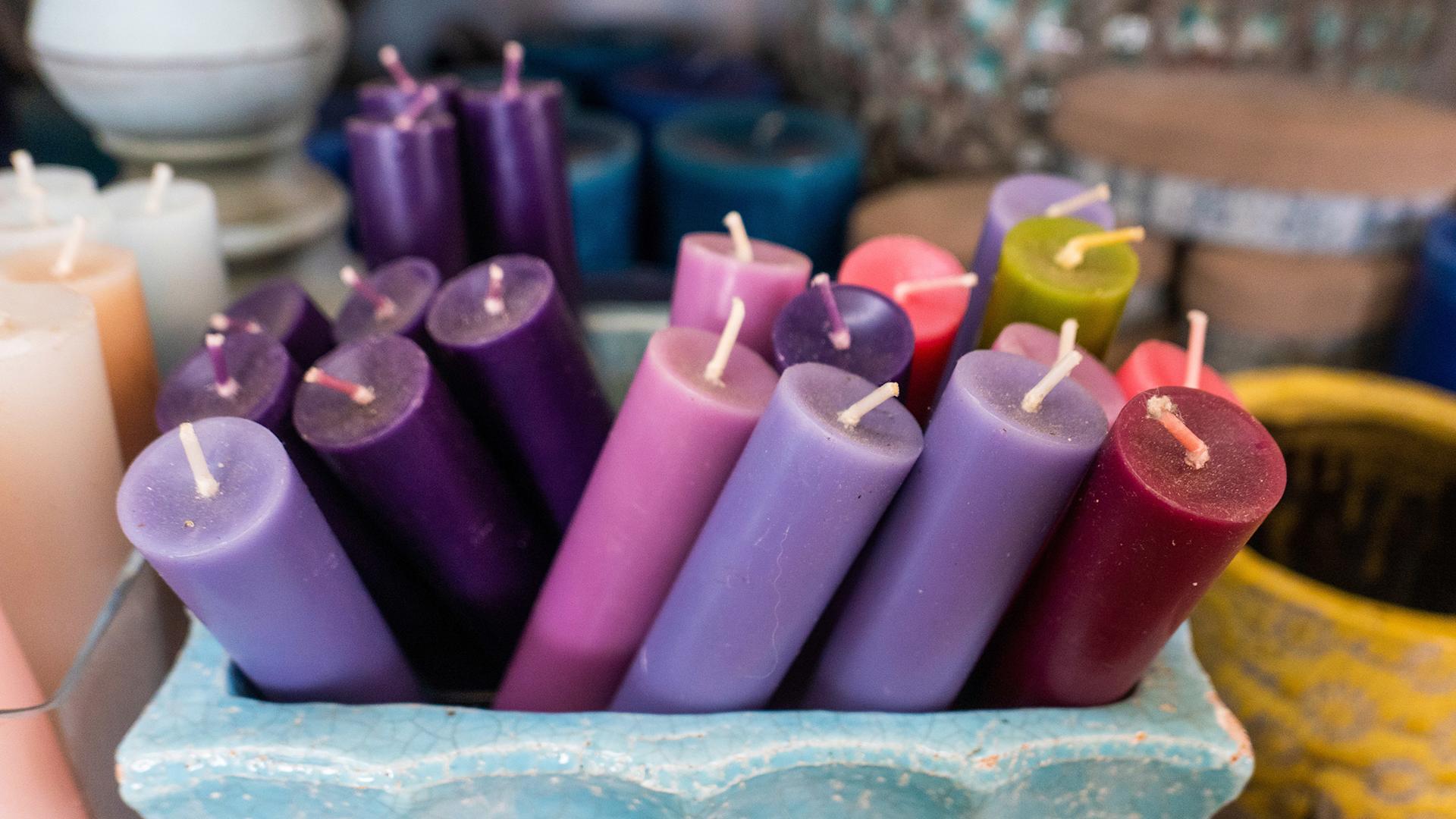
Food waste
What do you know about food waste?
Take part in the food waste quiz and find out how much you already know.
navigation

Candle tips
It’s candle season once again. What to look out for when buying them and what you can do to keep them burning beautifully.
The main cause of dripping candles is draughts, so make sure to place the candle in a place without flowing air. It also helps if it’s standing up straight. You should also regularly trim the wick to a one-centimetre length – especially before you light the candle for the first time.
Yes, most candles are made from paraffin, a mineral oil that is produced during the processing of petroleum. A more sustainable alternative choice is candles made of stearin, which consist of vegetable oils, i.e. a renewable raw material. Migros offers stearin candles made from a mixture of rapeseed oil and animal fats (a waste product).
Candles made from beeswax are also a more environmentally friendly choice than those made from paraffin, as it is a purely natural product, but the commodity is rare. A bee colony has to work for a whole year to produce one kilogram of wax. And that’s why beeswax candles cost considerably more.
No. Aside from your individual aesthetic preferences, there are no advantages to cutting off the wax rim. If you prefer to remove the rim, you can collect the leftover wax and melt the different pieces to make a new candle.
No, with modern products the storage time has no influence on how quickly a candle burns. In the past, however, when candles were made of tallow, it was possible to extend the burning time somewhat by storing the candles for a few years, as the tallow became harder with age and therefore burned more slowly.
Yes, after extinguishing candles it is advisable to ventilate the room thoroughly: this gets rid of the tiny fine dust particles from candle smoke. To reduce soot when the candle burns, make sure that the candle is not exposed to a draught. You should also trim the wick regularly and place the candles at least ten centimetres apart. This ensures they receive sufficient oxygen and produce less smoke. Finally, do not blow out the candles, but rather smother the flame with a candle snuffer or carefully dip the burning wick briefly into the liquid wax with an elongated object and immediately lift it again. This prevents smoke.
First, wait until the wax has cooled. Then scrape off the thick lumps of wax. Place a piece of absorbent paper, such as blotting paper, on the remaining thin layer of wax and glide over it with a hot iron. When the paper has become saturated in one spot, simply place a clean spot of the paper on the wax. Repeat this process until all of the wax has been removed.
You should follow these three rules. First, never leave candles burning unattended. In other words, extinguish the candle before you leave the room. Second, place candles on a fireproof surface such as ceramic, glass or stone – this also applies to tea lights in aluminium cups, as they also heat up significantly. Third, make sure that there are no flammable materials such as paper napkins, decorations, fir branches and curtains nearby.
Whether for when you’re shopping or in the kitchen, we offer tips on little everyday things that you can do to help the environment.